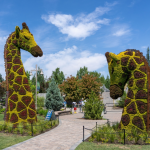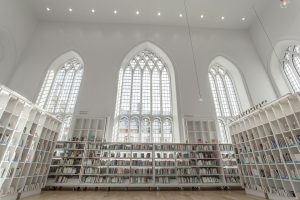Calgary Origins & Evolution
Calgary, located in the foothills of the Rocky Mountains of Alberta, Canada, has a rich and diverse history. Its name originates from a bay on the Isle of Mull, Scotland. It was officially founded as a town in 1884, and by the year 1891, it had elected its first mayor. The development of Calgary was primarily driven by the lucrative cattle industry and later by the discovery of large oil reserves.
Calgary’s evolution from a modest frontier town to a vibrant, cosmopolitan city has been remarkable. Today, it is the third-largest municipality in Canada and boasts a thriving energy market playing a pivotal role in the country’s economy.
City’s Geography & Demography
Calgary is located approximately 80 kilometers east of the Canadian Rockies at the junction of the Bow and Elbow rivers. With a total area of 848 square kilometers, it is one of the largest cities in Canada.
Despite its rough-hewn cowboy reputation, the city has a diverse and multicultural population. According to the latest census, the city’s population is over 1.3 million, making it Alberta’s largest city. The city enjoys a high quality of life and was ranked as the fourth most livable city in the world by the Economist Intelligence Unit.
Cultural & Artistic Landscape in Calgary
Culture and arts are notably prominent in Calgary. The city is home to numerous events including the Calgary Stampede Historical Significance of The Calgary Stampede The Calgary Stampede, often referred to as "The Greatest Outdoor Show on Earth," has a rich and colourful history stretching back over a century. In its earliest years, the Stampede was more than just a community fair. It was a celebration of the cowboy lifestyle and rugged agricultural community which Calgary was founded on...., a world-famous rodeo festival that draws over a million visitors annually. As for the performing arts, visitors can immerse themselves at the EPCOR Centre for the Performing Arts
Historical Significance of The Calgary Stampede The Calgary Stampede, often referred to as "The Greatest Outdoor Show on Earth," has a rich and colourful history stretching back over a century. In its earliest years, the Stampede was more than just a community fair. It was a celebration of the cowboy lifestyle and rugged agricultural community which Calgary was founded on...., a world-famous rodeo festival that draws over a million visitors annually. As for the performing arts, visitors can immerse themselves at the EPCOR Centre for the Performing Arts The Historical Significance of EPCOR Centre for the Performing Arts Step into the EPCOR Centre for the Performing Arts, and you will be transported to a place where history, culture, and art come alive. Nestled in the heart of Calgary, Alberta, this iconic landmark holds a significant place in Canadian history. Established in 1985 as the Calgary Centre for Performing..., which hosts Theatre Calgary, the Alberta Theatre Projects, and the Calgary Philharmonic Orchestra.
The Historical Significance of EPCOR Centre for the Performing Arts Step into the EPCOR Centre for the Performing Arts, and you will be transported to a place where history, culture, and art come alive. Nestled in the heart of Calgary, Alberta, this iconic landmark holds a significant place in Canadian history. Established in 1985 as the Calgary Centre for Performing..., which hosts Theatre Calgary, the Alberta Theatre Projects, and the Calgary Philharmonic Orchestra.
Art enthusiasts will find a range of galleries to explore, including the notable Glenbow Museum Stepping Into History Nestled in the vibrant city of Calgary, Alberta, the Glenbow Museum stands as a testament to Canada's rich cultural heritage. As one of the country's most iconic landmarks, visiting the Glenbow Museum is like taking a step back in time, immersing oneself in the stories and artifacts that have shaped the nation. Since its establishment in 1966,..., the largest art museum in Western Canada, displaying regional art, culture, and history.
Stepping Into History Nestled in the vibrant city of Calgary, Alberta, the Glenbow Museum stands as a testament to Canada's rich cultural heritage. As one of the country's most iconic landmarks, visiting the Glenbow Museum is like taking a step back in time, immersing oneself in the stories and artifacts that have shaped the nation. Since its establishment in 1966,..., the largest art museum in Western Canada, displaying regional art, culture, and history.
Educational & Research Facilities
Calgary boasts world-class educational and research facilities. The University of Calgary The Historical Significance of the University of Calgary Steeped in history, the University of Calgary stands as a testament to the city's growth and development. Established in 1966, this renowned institution has played a pivotal role in shaping Calgary's cultural and intellectual landscape. Originally founded as the Calgary branch of the University of Alberta, it became an independent entity in... stands amidst these, known globally for its research in engineering and health sciences. The city’s public library system is also one of the busiest in North America, underlining the city’s commitment to literacy and learning.
The Historical Significance of the University of Calgary Steeped in history, the University of Calgary stands as a testament to the city's growth and development. Established in 1966, this renowned institution has played a pivotal role in shaping Calgary's cultural and intellectual landscape. Originally founded as the Calgary branch of the University of Alberta, it became an independent entity in... stands amidst these, known globally for its research in engineering and health sciences. The city’s public library system is also one of the busiest in North America, underlining the city’s commitment to literacy and learning.
Calgary’s Highlights & Recreation
Calgary doesn’t fall short of attractions and recreational spots. The Calgary Tower offers visitors a panoramic view of the city, while the famous Canada Olympic Park serves as a training facility for athletes and also provides year-round recreational activities for the public.
For green spaces, Prince’s Island Park A Historical Gem Prince’s Island Park, located in the heart of Calgary, Alberta, is an enchanting urban oasis that offers a glimpse into the city’s rich history. Originally known as St. George’s Island, it was renamed in 1873 after Peter Prince, a lumberman who owned the land at the time. Today, this picturesque island park is a testament to the..., located on an island in the Bow River, is one of the best spots for residents and visitors to unwind. Furthermore, the Calgary Zoo
A Historical Gem Prince’s Island Park, located in the heart of Calgary, Alberta, is an enchanting urban oasis that offers a glimpse into the city’s rich history. Originally known as St. George’s Island, it was renamed in 1873 after Peter Prince, a lumberman who owned the land at the time. Today, this picturesque island park is a testament to the..., located on an island in the Bow River, is one of the best spots for residents and visitors to unwind. Furthermore, the Calgary Zoo The Historical Significance of Calgary Zoo The Calgary Zoo holds a special place in the hearts of Canadians, as it has stood as an educational and recreational institution for over a century. Established in 1929, it has not only survived but thrived, adapting and growing with each passing decade. The zoo has played a significant role in the conservation and... is another family-friendly favorite, hosting over 1,000 animals from around the world.
The Historical Significance of Calgary Zoo The Calgary Zoo holds a special place in the hearts of Canadians, as it has stood as an educational and recreational institution for over a century. Established in 1929, it has not only survived but thrived, adapting and growing with each passing decade. The zoo has played a significant role in the conservation and... is another family-friendly favorite, hosting over 1,000 animals from around the world.
Commerce & Conveniences
Whether it’s plush malls or quirky boutiques, Calgary caters to every shopper’s taste. The city is also well serviced by banks, postal services, and hosts seasonal sales, notably the Boxing Day and Black Friday sales which attract folks from all over the region.
Transport & Connectivity
Calgary offers excellent public transportation options. The Calgary Transit, comprising of buses and light rail transit, effectively serves the city. Furthermore, Calgary is also served by the Calgary International Airport, which is one of Canada’s busiest and offers direct flights to major cities around the globe.
Sports Facilities
Calgary is a paradise Paradise Origins & Evolution The story of Paradise begins in the late 1800s as a humble farming community. Over the past two centuries, it gradually evolved into one of the grandest living spaces one could find in Newfoundland and Labrador. Paradise was founded and developed along the Trans-Canada Highway's eastern tip, which eventually fueled its development as a glorious commercial... for sports enthusiasts. The city has several stadiums and sports facilities, including the Scotiabank Saddledome
Paradise Origins & Evolution The story of Paradise begins in the late 1800s as a humble farming community. Over the past two centuries, it gradually evolved into one of the grandest living spaces one could find in Newfoundland and Labrador. Paradise was founded and developed along the Trans-Canada Highway's eastern tip, which eventually fueled its development as a glorious commercial... for sports enthusiasts. The city has several stadiums and sports facilities, including the Scotiabank Saddledome Historical Significance The Scotiabank Saddledome stands as a testament to Calgary’s rich history and its enduring love affair with sports and entertainment. Opening its doors in 1983, this iconic landmark has witnessed countless exhilarating moments and played host to numerous major events. From the electrifying atmosphere during the 1988 Winter Olympics to unforgettable NHL playoff matchups, the Saddledome has etched..., which hosts the Calgary Flames of the NHL, and McMahon Stadium
Historical Significance The Scotiabank Saddledome stands as a testament to Calgary’s rich history and its enduring love affair with sports and entertainment. Opening its doors in 1983, this iconic landmark has witnessed countless exhilarating moments and played host to numerous major events. From the electrifying atmosphere during the 1988 Winter Olympics to unforgettable NHL playoff matchups, the Saddledome has etched..., which hosts the Calgary Flames of the NHL, and McMahon Stadium The Historical Significance of McMahon Stadium McMahon Stadium stands tall as a testament to Canada's love for sports and the enduring spirit of its people. Built in 1960, the stadium has been the heart and soul of Calgary's sporting community for over six decades. It has witnessed countless thrilling moments, from the roar of the crowd during Grey Cup championships..., home of the Calgary Stampeders, a team in the Canadian Football League.
The Historical Significance of McMahon Stadium McMahon Stadium stands tall as a testament to Canada's love for sports and the enduring spirit of its people. Built in 1960, the stadium has been the heart and soul of Calgary's sporting community for over six decades. It has witnessed countless thrilling moments, from the roar of the crowd during Grey Cup championships..., home of the Calgary Stampeders, a team in the Canadian Football League.
Traveler’s Final Take
In conclusion, Calgary’s unique blend of adventurous outdoor lifestyle, rich cultural scene, high-quality education and research institutions, and efficient public amenities make it a must-visit city. Whether you wish to catch a live rodeo show, immerse in the vibrant arts scene, navigate through its sprawling parks, or cheer at a thrilling hockey match, Calgary offers an invigorating experience for all.
Must-Visit Spots in Calgary
- The Calgary Stampede
- EPCOR Centre for the Performing Arts
- Glenbow Museum
- University of Calgary
- Calgary Tower
- Canada Olympic Park
- Prince’s Island Park
- Calgary Zoo
- Scotiabank Saddledome
- McMahon Stadium










